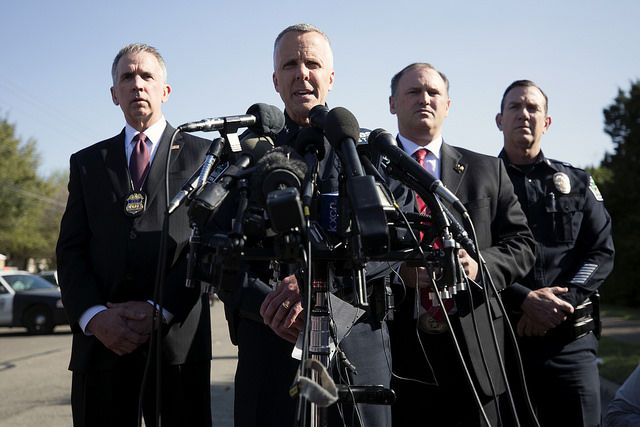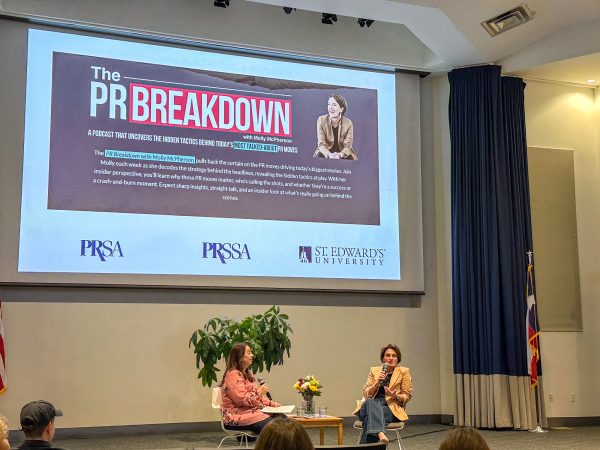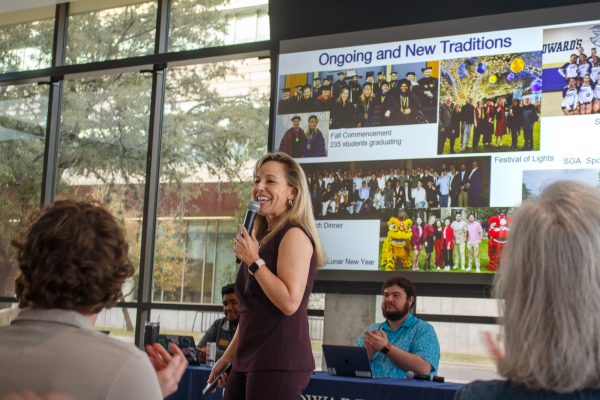Campus Safety monitors Austin explosion developments
St. Edward’s university, along with others in the Austin area, are taking precautions to keep students safe from explosions and bomb packages that have killed two and injured four other Austin residents. College campuses have not been targeted in the attacks.
“There is nothing that we’re aware of now that causes us to be concerned that the campus is at risk in any way,” Director of Campus Resilience Billy Atkins noted, encouraging the SEU community to remain vigilant and aware of their surroundings on and off campus.
The most recent explosion believed to be connected to the bombings in Austin happened early Tuesday morning at a FedEx distribution center in Schertz, an area northeast of San Antonio. Upon treatment for minor injuries, police said a worker was released.
“As of now, we don’t have any link to say that this is related to the San Antonio incident,” police said of a suspicious package at a FedEx on McKinney Falls Parkway.
Sophomore D’Vonna Miller, who was in San Antonio for Spring Break, refrained from traveling back to Austin.
“I’ve been constantly reminded about things and updated so I’ve kind of psyched myself out about the drive back,” Miller said. Police initially investigated the bombings in East Austin as potential hate crimes. Since then, the explosions have reached other areas of the city and the victims have been black, Hispanic and white. Miller added that she wishes she knew if the explosions were hate crimes or random. “I feel like schools are really populated so the idea of being on campus just makes me super nervous right now.”
The Office of Campus Safety tweeted a reminder March 12 that Mail and Copy Services receive and deliver most packages on campus, but that occasionally carriers drop off packages directly to residences and offices on campus. The office also mentioned incidents with unprecedented history or that seem suspicious should be reported.
“If you are in a situation where no one had ever done that, then I’d say give us a call,” Atkins said, promoting the usage of the Topper Safe app. “If someone dropped off a package, a backpack, whatever and that’s never happened before, give us a call and we’ll come look at it.”
The first bombing occurred March 2, followed by two others on March 12. These three incidents occurred in in East Austin, a less affluent area of town with a higher minority population. The packages have exploded on resident’s doorsteps, killing two African-Americans aged 39 and 17, and severely injuring a 75-year-old Hispanic woman.
As reported by Eli Rosenberg of the Washington Post, some residents of the affected areas have criticized police’s initial theories of potential gang activity. The death of the first victim was first ruled a suspicious death, not homicide.
“We know that if these bombings would have happened on the west side, there would have only been one,” said Fatima Mann, the executive director of Counter Balance: ATX, an activist organization that works with low-income and minority groups in the city. “They would have locked down the community and made sure it wouldn’t happen again.”
A fourth bombing Sunday night in Southwest Austin had a different methodology, which used a tripwire on Dawn Song Drive that the victims crossed over while one was on the sidewalk and the other rode their bike. The explosion injured two men in their mid-20s, and happened 5.5 miles from campus.
The University of Texas at Austin has increased campus patrols, including K-9 units, and are screening suspicious mail delivered to the university. In the latest email update, Campus Safety wrote that St. Edward’s is screening all packages in accordance with federal guidelines, and that UPD is conducting perimeter checks and responding to all suspicious item/person calls. Parking Enforcement is scanning the license plates of all vehicles parked on campus.
.@SEUSafety just emailed an update regarding the #AustinBombings. Here’s how the university is monitoring the latest developments: https://t.co/STSfFgAW15 | @dreuhmarie & @Amanda620DG pic.twitter.com/SqAxqJcTqv
— Hilltop Views (@HilltopViews) March 21, 2018
The Campus Community Emergency Response Team, or C-CERT, came to St. Edward’s more than a decade ago following a series of bomb threats in 2006. The tech area coordinator for the Arts & Humanities Dan McCoy is a member of the emergency preparedness team.
“Suspicious activity is based on perspective,” McCoy said. “If it’s out of the ordinary to you, it might not be out of the ordinary to somebody else in that environment.”
Still, Atkins mentioned that workers at the Ragsdale Center have expressed concern about items brought to their lost and found.
“I wouldn’t be worried about it per say,” Atkins said. “But if someone brings you something and there’s wires sticking out of it or if it’s leaking some kind of liquid, or if it just seems out of the ordinary, isolate it and give us a call.”
Governor Greg Abbott has announced the release of $265,500 in emergency funding for seven portable x-ray systems to assist the Austin Police Dept. and Texas Rangers in bomb detection. Moreover, the governor and Austin Police Chief Brian Manley are announcing a combined $115,000 reward for tips that led to the suspect’s arrest.
APD is asking the public to remain vigilant and report anything suspicious. If you come across ANYTHING that looks suspicious, DO NOT touch, handle or disturb it. Keep a safe distance and call 9-1-1 immediately. pic.twitter.com/BfFQZ95Kfe
— Austin Police Dept (@Austin_Police) March 20, 2018







